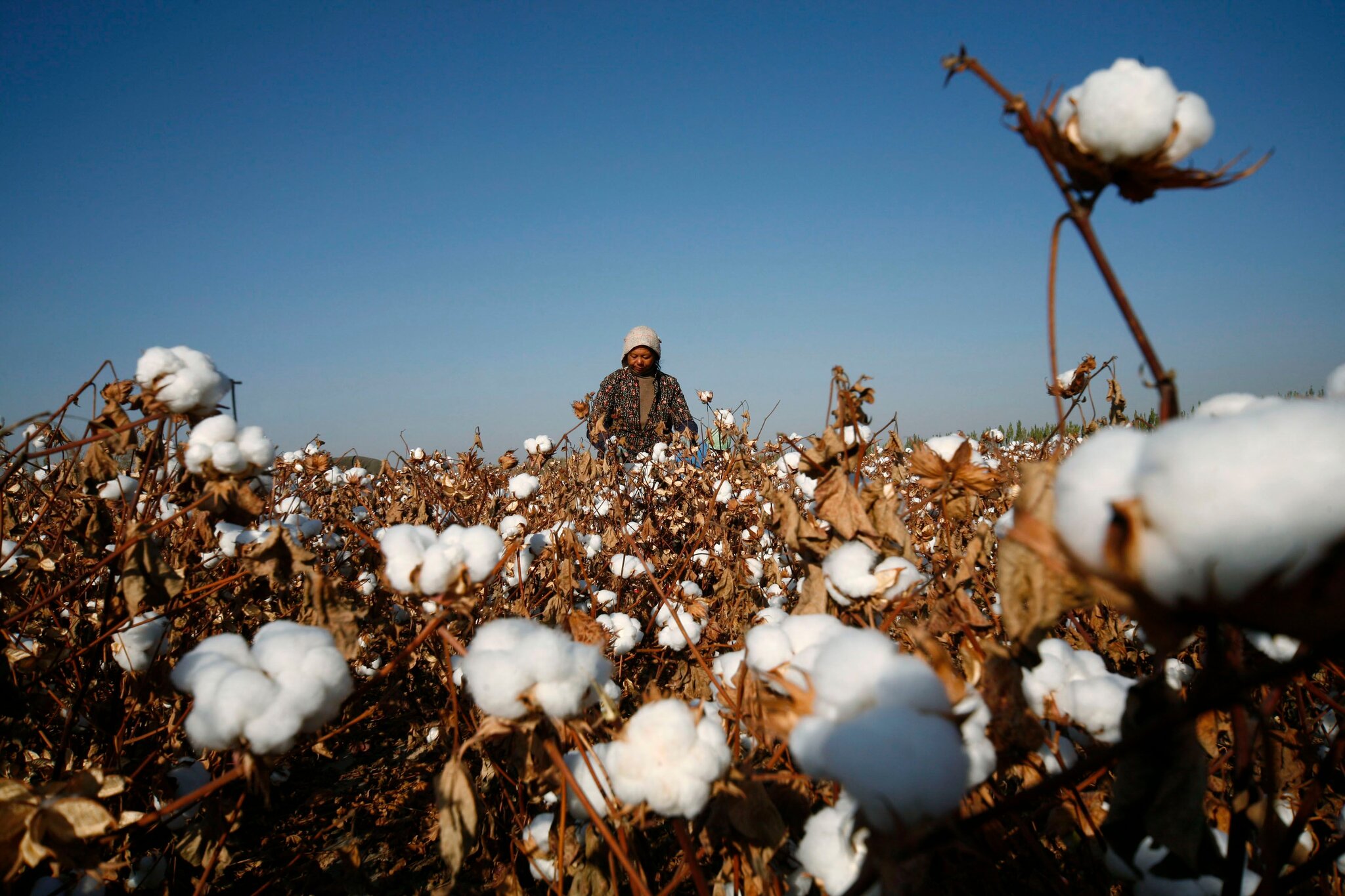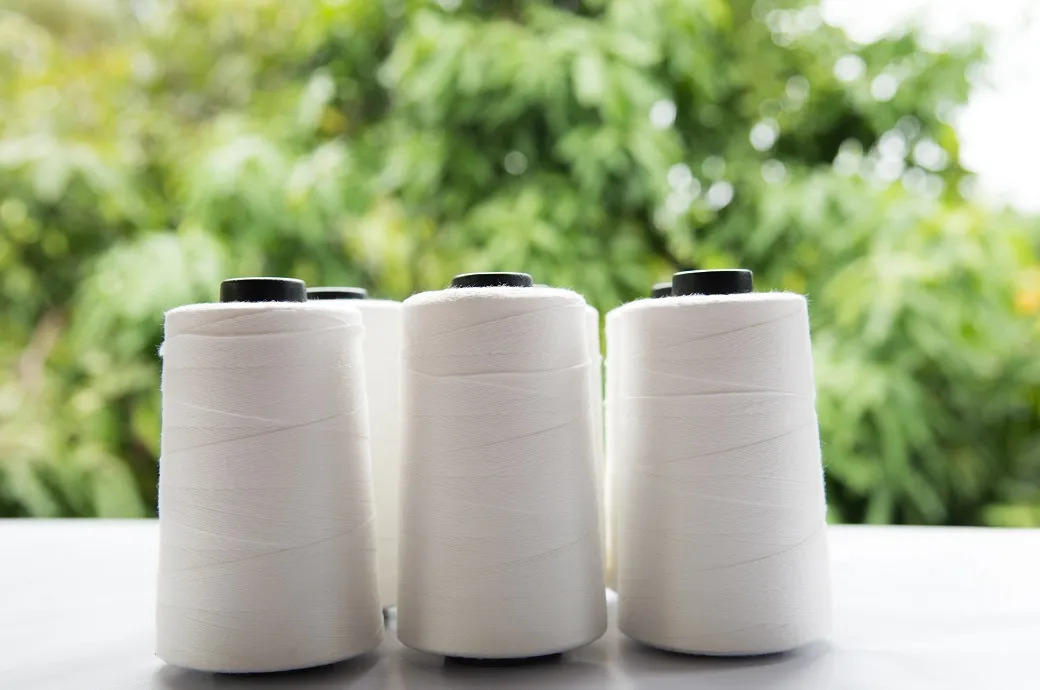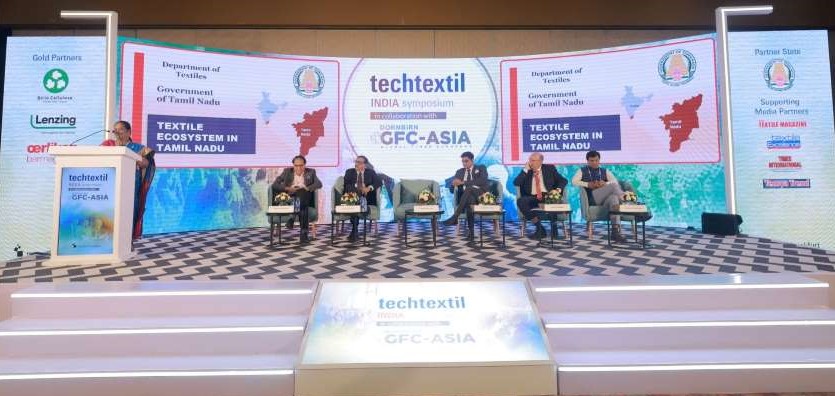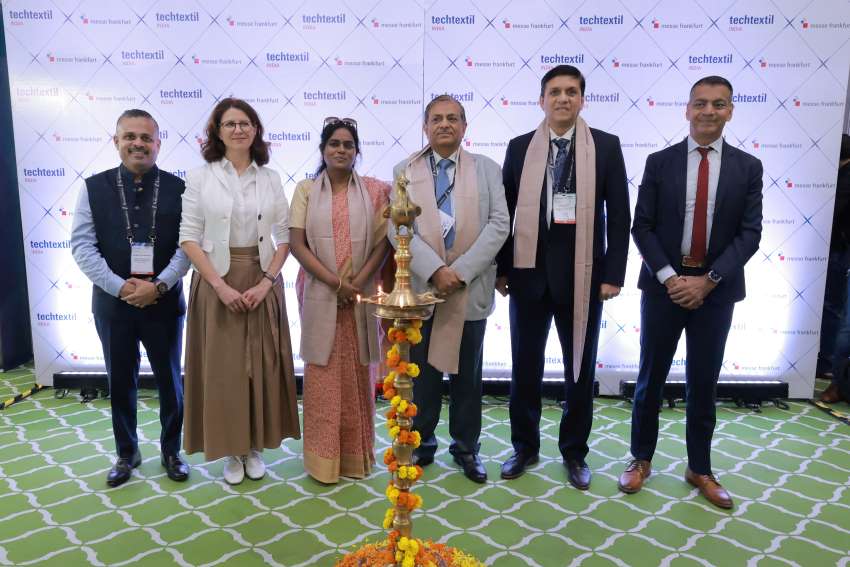FW
For the first half of the year American imports of women’s trousers and shorts from Kenya rose 23.5 per cent. Women’s trousers accounted for nearly a third of the value of clothes imported by the US from Kenya, having grown by 12.6 per cent. However, shows that imports of women’s skirts from Kenya dropped 43 per cent. Imports of women’s blouses also dropped four per cent.
Imports of men’s trousers and shorts in the first half of the year grew 16.6 per cent. Exports of women’s trousers from Kenya to the US have grown 44 per cent over the past three years. Kenya is among the sub-Saharan African countries which can export goods to the US tax-free. It is looking to further improve exports to the US.
Textiles and apparel account for over 80 per cent of Kenya’s total exports to the US. An export processing zone is coming up in Kenya. This is expected to revamp the industry which was a key forex exchange earner and job creator in the 1980s before market liberalisation in 1991 opened the floodgates to cheaper imported secondhand clothes. Investors will enjoy a 10-year corporate and withholding tax holiday, value added tax and stamp duty exemptions and utility connections.
Liberty Fairs is stepping into the women’s market this coming season. The trade show will house women’s labels at its February 2018 show in Las Vegas as well as a denim activation named Indigo.
Liberty Fairs is a men’s contemporary fashion trade event held bi-annually in New York City and Las Vegas. It curates the most forward thinking brands and brings them together with the industry’s top buyers in an inspiring design-driven environment. The blend of commerce and creativity introduces a new era in trade events and delivers the best of what’s new in the industry. Liberty stands for freedom and space without boundaries.
The new women’s section will appear at both Liberty Fairs Las Vegas shows in February and August, and this season over 40 women’s brands will appear at the trade show. Hudson Jeans will serve as a central focus for the Indigo section. In addition to launching Indigo and housing women’s brands, the Las Vegas show will also feature Assembly, a new activation for seminars that will be organized with Agenda and the Capsule Show.
Capsule and Liberty Fairs have held partnered shows in Las Vegas for several seasons and began partnering for a New York City show since 2016.
Every year, the clothing industry does away with almost 30 per cent of its produced clothing. This amounts to almost 25 billion garments or the equivalent of almost 30,000 Boeing 747s. This enormous waste contributes to mass destruction of natural habitats and an unending supply of material for our landfills. Now, there is a movement to build up to eliminate this irresponsible manufacturing method. Spearheading this movement is T-shared headed by longtime fashion industry veteran Jeroen van der Heide.
Tshared has launched a new line called Zero Waste T-shirts. This line, not only offers premium clothing, but also redefines how clothing production can eliminate waste. Each zero waste T-shirt that is produced is one of 111 limited products and is uniquely sized for the buyer. The consumer who chooses which design he/she would like, provides his/her measurements and receives the premium customized T-shirt. Additionally, each purchase comes with a detailed description of where and how the materials were sourced and processed, ensuring that consumers have transparency into the manufacturing process. If after five years, one wants to return the Zero
Waste T-shirt, he/she will receive an 11 per cent discount on his/her next purchase.
Not only does Tshared offer high quality clothing to its customers, but it is also a model for the garment industry. Instead of overproducing a large number of garments that the public won’t purchase, manufacturers can maximize profits by only producing desirable outfits.
Among seven garment-exporting countries in Asia, Vietnam is the country with the highest rate of compliance with the minimum wage in the garment, textile and footwear sectors. The rate of extreme non-compliance in Vietnam, which means wage workers are paid less than four-fifths of the minimum wage in the country, is 3.8 per cent and moderate non-compliance (workers paid between 80 per cent and less than 100 per cent of the minimum wage) is 2.8 per cent.
In contrast, the Philippines, India, Thailand, Pakistan, and Indonesia each have a large proportion of garment sector workers who are paid far below the minimum wage. The extreme non-compliance rate in the Philippines and India is 38.8 and 34.9 per cent respectively. About one fourth of Indonesian garment workers also earn far below the minimum wage.
In all the countries, women are more likely than men to be paid below the minimum wage in the garment sector. Again, Vietnam is among the nations with the smallest male-female gap, behind Cambodia and Indonesia, whereas the largest male-female non-compliance gap is found in Pakistan.
Vietnam’s regional minimum wages increased by about 12 to 15 per cent on a yearly basis between 2014 and 2016 and will go up by 7.3 per cent next year.
The USDA’s forecast for August of US’s cotton supply and demand numbers are about to be revised. The August projection of 15.9 million bales of cotton was an important first benchmark of actual production since it was the season’s first estimate based on field sampling of squares and bolls. But its projections for September serve as either a confirmation of or contradiction to what it had measured in August. This sort of projection can sometimes lead to market surprises when there are fewer remaining harvestable bolls in September compared to the potential from a month before.
The growing season in the Southwest is winding up in strange fashion. After a very hot and dry July, August was unusually wet. The August rains have probably added some pounds of yield to later-maturing fields in West Texas, particularly irrigated fields, and also, thankfully, reduced some expenses that would have been incurred in with August irrigations.
But, much of the dry land acreage in West Texas was probably too far along to benefit from the August rains, so their effect may be negligible. It is a different story in Central and Southeast Texas where continually moist conditions on mature cotton have likely lowered color grades and caused widespread sprouting of cottonseed in the boll. The impact of this could hurt growers through discounted loan values, higher ginning costs, and little cottonseed value to offset those costs.
The level of bales produced by the weird August weather may be the same, or even a little higher. While causing quality problems, my understanding is that the Central and Southeast Texas crop will still have to be harvested and ginned. So there may not be any downward adjustment in aggregate production. In addition, there may be a marginal increase in yields from west Texas and, so also production from later-maturing irrigated land.
Besides making ambitious growth plans, global chemical companies are also taking steps to increase efficiency and improve productivity with minimum carbon footprint. For this, they are ensuring that sustainable processes are adopted not just within their production facilities but also beyond their factory boundaries. One such initiative is Together for Sustainability (TfS), established in 2011 by six global chemical companies to create benchmarks for sustainable supply chains. TfS has developed and implemented a global programme to assess, audit and improve sustainability practices within the supply chains of the chemical industry.
The initiative is increasingly gaining traction among the chemical industry as TfS membership has more than tripled in the last five years to 19 with companies such as AkzoNobel, Arkema, BASF, Bayer, Clariant, Covestro, Evonik, Henkel, Lanxess, Solvay, etc, as its members. TfS has established a standard approach for assessing and improving the sustainability performance of suppliers within chemical industry supply chains. Its assessments and audits are conducted to a pre-defined set of criteria and then shared across TfS members, improving efficiency for all involved. The TfS members currently share approximately 5,500 assessments and 580 audits.
Indian companies having large international exposure are increasingly showing their willingness to join TfS. Due to the importance of the Indian market and supplier base, the TfS members have chosen Mumbai as location for this year’s TfS supplier conference, to be held on September 20 this year.
Tamil Nadu has offered to set up mini textile parks for handlooms and textiles. The state will bear 50 per cent of the total cost for creating infrastructure facilities such as laying of roads, sewage treatment plant, captive power plant and telecommunication. Ten entrepreneurs could form a cluster and set up a mini textile park on ten acres of land after registering a Special Purpose Vehicle. They should buy the land on their own and establish a minimum of 10 work sheds in the park to avail of the subsidy for the infrastructure.
The total investment on buildings and machinery should be more than two times the amount spent for creating infrastructure facilities. The establishment of such parks is expected to help improve the standard of living of handloom and power loom weavers. The handloom industry is the second largest employer in Tamil Nadu after agriculture. Tamil Nadu accounts for nearly 30 per cent of the country’s handloom textiles production and 50 per cent of exports. It has over six lakh handloom units and 1,400 cooperative societies. Handloom weaving with products ranging from duster cloth to silk saris is a common occupation throughout the state.
However, demand is disappearing for traditional handloom products owing to changing consumer preferences. The industry lacks infrastructure to upgrade the looms.
Cotton yarn import to Bangladesh has increased by more than 25 per cent in the first seven months in 2016. Local spinners have termed this as a threat for the sub-sector of the country's primary textile industry. Sources in the industry feel that if the trend continues, it would badly affect the backward linkage industry that meets nearly 80 per cent requirement of the local knit sector.
From January to July this year, Bangladesh imported 207,644 tons of cotton yarn says Bangladesh Textile Mills Association (BTMA). In 2015, a total of 295,330 tons of cotton yarn was imported and the figure was 280,283 tons in 2014, BTMA’s data points out. A major portion of the yarn was imported from India. In recent times, yarn is also being imported from Indonesia as well.
Former BTMA president, Jahangir Alamin said this was alarming for the local spinning industry that has the capacity to meet the knit sector's requirements. But it is worth a thought that the country cannot produce a few grades of yarn used for producing high value added products, he added.
Local millers can meet 35 to 40 per cent of the woven sector's fabric requirement, and the rest is met through import, he went on to add. Around 430 local spinning mills supply more than 80 per cent of the raw material for the country's knitwear sector and 35 to 40 per cent of the woven sector, according to BTMA.
Hong Kong-based companies are increasingly eyeing relocation of their production or diversification out of mainland China due to rising production costs. And India could well become their go-to destination. States they are particularly interested in are Gujarat, Maharashtra, Andhra Pradesh, Tamil Nadu and Karnataka. These states have developed industrial parks for private investors to set up their production plants. Infrastructure and amenities such as ports, connecting roads, electricity, water supply, sewage-treatment facilities and communication networks are provided.
Also all five states have made efforts in tax reforms to streamline registration and payment of Value Added Tax and Central Sales Tax through online services. India provides for low cost manufacturing versus other Asian economies such as Vietnam, Bangladesh, Indonesia, Sri Lanka and mainland China. Currently India’s labor costs are lower than those in China and almost all of the countries in Southeast Asia, with the exception of Myanmar. India’s wages are a third of the wages in mainland China and roughly half the wages in Indonesia.
India has a huge buyers’ market and the country has potential in low value added product manufacturing like apparel, shoes, clothing and textiles. Another key consideration for factory relocation is the import tariffs levied on manufactured products originating from India and whether this country has entered into preferential trade deals that lower import tariffs. India has been an active player in Asia. US import tariff rates for Indian yarn-related products range between zero and 2.7 per cent.
European Union retailers hope for a lot from the FTA with Vietnam. It’s expected to boost European growth and job creation in the retail sector. Vietnam is EU retail sector’s second largest source of fast-moving consumer goods after China. There is also a growing interest for investment in retail stores in Vietnam. The scale of the potential gain for the sector is enormous. For EU retail, FTA with Vietnam is more important than the agreements with the US, Canada and Japan combined.
EU retailers currently import eight per cent of fast-moving consumer goods from Vietnam, a figure still well behind the 50 per cent imported from China, but growing fast and set to get a boost from the elimination of tariffs under the FTA, which would lower costs for importers and European consumers. Even without the FTA, EU clothing imports from Vietnam increased by 3.2 per cent in 2015.
Among Vietnam’s key export items, garment and textile exports grew 4.2 per cent year-on-year in the first eight months of 2016 and footwear exports grew 8.1 per cent. The agreement is also expected to boost Vietnam’s development, already considered an exceptional success story, with per capita income rocketing from 100 dollars in 1986 to 2100 dollars in 2015.












